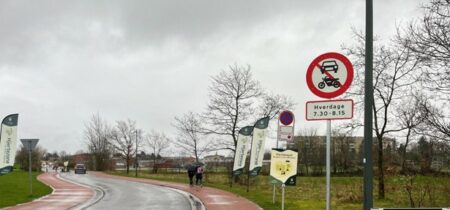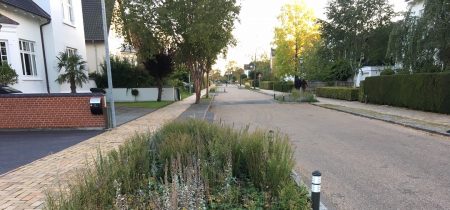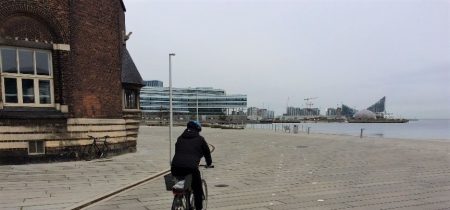Pedestrian zones, squares and marketplaces
Cyclists should be factored into the design of pedestrian zones, squares, and marketplaces. Cyclists contribute to urban life and should have access to all areas provided they pose no risk to pedestrians. Time limits may be imposed on cyclist access.
By Troels Andersen, Odense Municipality
In Denmark pedestrians, cyclists and drivers are usually separated so each road user group has its own area. Cars, bicycles and pedestrians rarely share the same space. In pedestrian zones where cars are permitted, drivers and cyclists must be alert and watch out for pedestrians, and they must always yield to pedestrians. However, cyclists can be prohibited from entering pedestrian zones by signage.
Many cyclists shop in town and are road users and pedestrians at the same time. Consequently it may be a good idea to allow cyclists into traditional pedestrian zones to a greater extent than is the case today. In some pedestrian zones the volume of pedestrian traffic is so high that this is inadvisable for both pedestrians and cyclists. In addition, the needs of the physically disabled and visually impaired should also be taken into account.
Cyclist and pedestrian zones
The baseline rule is that bicycle traffic is prohibited in pedestrian zones. When cycling is allowed in a pedestrian zone and there are neither cycle tracks nor cycle lanes, cyclists must always yield to pedestrians. Instead of a total prohibition of bicycle traffic in a pedestrian zone cycling may be allowed within a definite time limit outside normal business hours when pedestrian traffic is often minimal. Experience in Odense shows that pedestrians say they appreciate the security of the presence of other people in pedestrian zones at night.
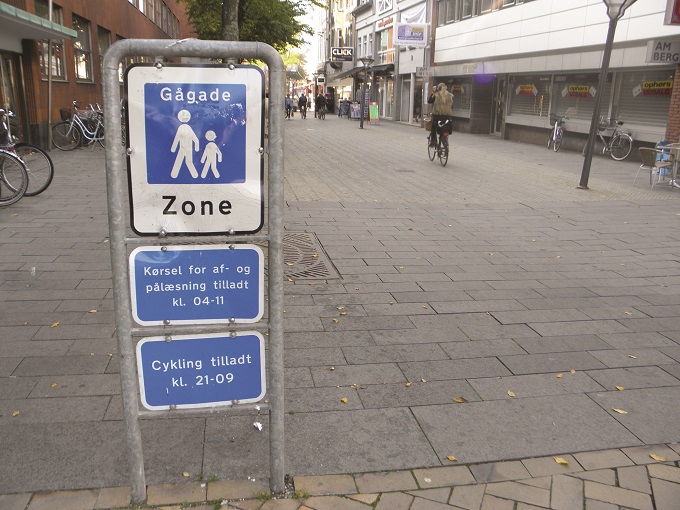
- The pedestrian zone is a short cut for cyclists from 9 p.m.- 9 a.m. Photo Troels Andersen
If there is enough space and an appropriate level of pedestrians, a cycle track can be installed in a pedestrian zone. This reduces the risk of potential conflicts between cyclists and pedestrians. The disadvantage of the cycle track is that it may be a barrier for crossing pedestrians. A cycle track is a major barrier for the physically disabled, whereas it’s easier for the visually impaired to find their way by following the cycle track divider, a kerb or a gutter, for example.
When cycle tracks are installed in pedestrian zones a different surface, colour or change of level (2-7 cm) should make road users aware of where they are. A low edge should be vertical.
Designing squares and marketplaces
The concept of squares and marketplaces ranges from large, centrally placed squares and marketplaces to small intimate spaces. It is often a priority during traffic reorganization to recreate the town square as the central meeting place and commercial center.
Many squares and marketplaces have been made wholly or partially car- free, parking spaces have been removed, a new surface has been applied, and trees or shrubbery have been planted. There are benches and even outdoor cafés at most squares and marketplaces. Bicycle traffic is often prohibited automatically, but bicycle traffic should be factored in when squares are renovated or established. Remember that cyclists contribute to urban life, and a total prohibition may mean half empty squares and commercial centers.
Bicycle traffic on the square can be prevented by ensuring that the square cannot become a short cut for cyclists. Either paving stones can make the surface too uneven to ride on, or a railing can be set up. It’s difficult for the police to enforce bicycle traffic prohibitions if the square is a good shortcut for cyclists. Regardless of whether or not bicycle traffic is allowed, it’s important to set up bike racks to forestall undesirable bicycle parking.
Shared space means that all road users may use the same surface, and there are minimum regulations. There are cyclists and pedestrians who feel insecure in such areas, but generally they increase road users’ alertness.
Seep streets and living streets
There are many excellent examples of shared space for all types of road users in Denmark. In so-called seep streets pedestrians, cyclists and motor vehicles share the space, but must yield to pedestrians. Seep streets may have a speed limitation of 15 km/h and be one-way for motor traffic.
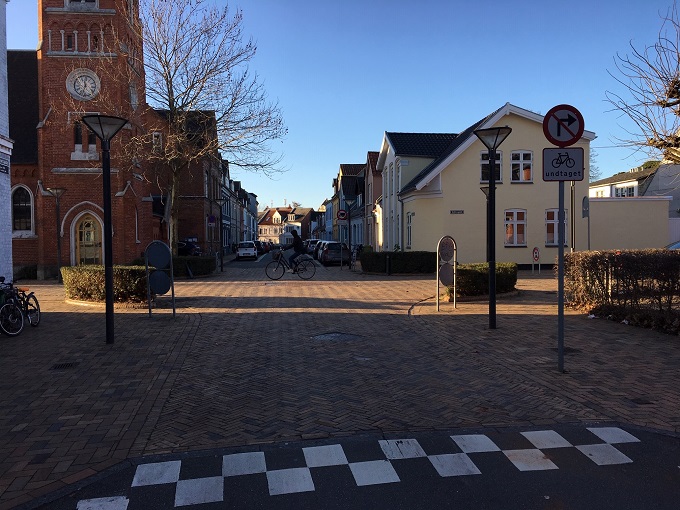
- Here the intersection is raised to the pavement level. Photo Troels Andersen
There are many seep streets as well as living streets in Denmark, based on the Dutch woonerf. In Denmark the traffic lane and the pavement in these areas may not be separated, and there may be no continuous difference in elevation in the road’s cross profile. The part of the road that is suitable for driving can be marked by a surface change, for example, or by street furniture.
Sources
Evaluering af Odense – Danmarks Nationale Cykelby, Odense Kommune, 2004



